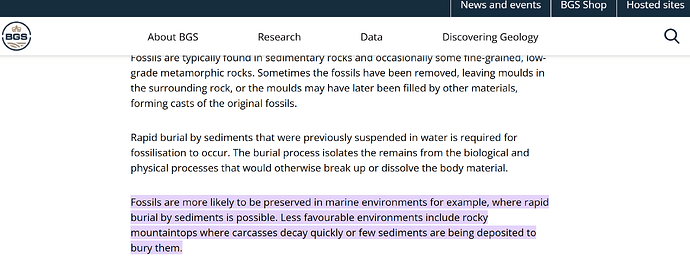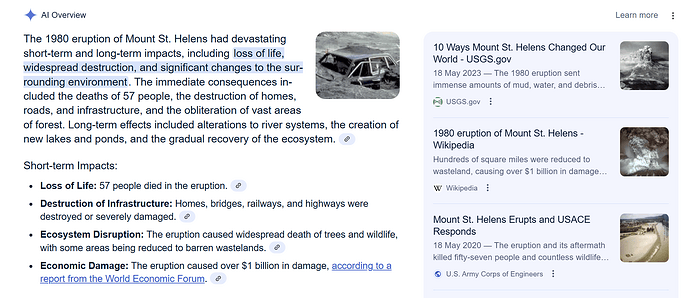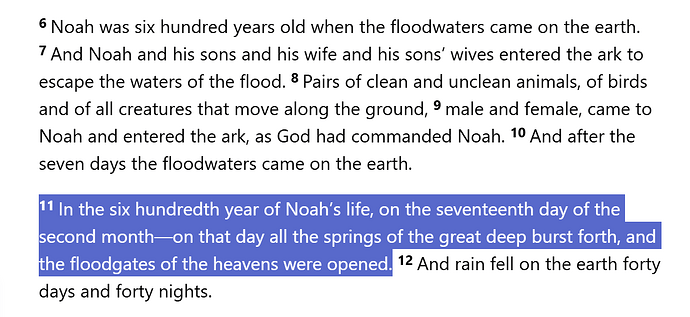If we take the Bible seriously, we must hold that history is a valid source of information. Claiming to accept “observational science” while rejecting historical sciences is not compatible with Christianity’s claims about the importance of historical events. Because we are finite, fallible, and fallen, our ideas of how things should have happened are not reliable. We must rely on the evidence to test ideas about how history works. For example, Marxism is not historically honest. Societies don’t follow simple patterns. Although certain trends are common (e.g., going bad, such as recorded in Judges, I and II Samuel, I and II Kings), the exact pattern is unpredictable. Nor are there simple repeating cycles, as “Enlightenment” thinkers often supposed. But knowing that God created all things and is in control, we can trust the evidence. Our interpretation isn’t perfect, but we can work at it and arrive at reasonable conclusions. But creation science does not look at the evidence and draw conclusions; it consists simply of arguing for a young earth no matter what the evidence shows. Rather that seeking to glorify God through good quality work, it falls into the Machiavellian error of thinking that the end justifies the means.
The value of road cuts and similar outcrops for understanding geology has been recognized for over 200 years. It’s claimed that William Buckland’s horse, upon seeing an outcrop, would stop and not go further unless you dismounted and examined the outcrop.
Chemical weathering is rather higher here in the southeastern US, so nice outcrops are often elusive. The rocks that can be seen near here, however, are gneisses with some schist and quartzite thrown in, and occasional amphibolite; sometimes it melted and produced patches of granite.
Gneiss requires high temperature and high pressure, with the pressure stronger in one direction to form. The gneiss contains sillimanite (named for Benjamin Silliman, a prominent old-earth creationist figure in early U.S. science). Sillimanite requires temperatures over 500 degrees C to form. Although it feels warm out there right now, it’s nowhere near 500. Sillimanite-containing rocks had to form several kilometers down and then reach the surface through erosion and uplift. A significant amount of time is needed to erode away the stuff above and raise those rocks to the surface. A flood cannot erode deeper than where the water flows to; invoking the flood does not account for their presence at the surface.
Producing directional pressure to make gneiss (or schist or phyllite or slate) is achieved by colliding two plates together. So some sort of rock with a diversity of silicate minerals experienced significant heat and pressure to turn it into gneiss as two plates collided.
Radiometric dating allows reconstruction of the history further back. The rock contains a mix of zircon ages. If the pre-metamorphic rock had been igneous, all of it cooling from magma or lava at basically the same time, the dates should be the same. But if the starting rock was sedimentary, containing pieces from various starting igneous rocks, then we should see a mix like what is observed. (This also means that the youngest zircon dates give a maximum age for the sedimentary rock, being the age of the youngest rocks that eroded to form the sedimentary rock. But there’s no guarantee just how fresh that igneous rock was when it eroded; the sedimentary rock might be somewhat younger.)
Can we trace what rocks eroded to form the sediment? Unsurprisingly, some of the zircon dates match zircon dates from more central North America. But other zircons match dates for Paraguay. The rocks under me, then formed from a mix of sand and mud eroding from North American rocks eroding to what’s now the west and eroding from small plates that broke off of what’s now south-central South America and collided to build a minicontinent that now makes up the east-central part of Georgia to Virginia.
Thus, we have a sequence of events:
Igneous rocks cool at various times, producing various radiometric dates.
Small plates break off South America, collide to form a minicontinent. Although the Iapetus Ocean starts wide enough to have different kinds of fossils on either side, eventually it is subducted away and the minicontinent (“Carolinia”) collides with North America. At the time, this is in mid-southern latitudes. Sediment eroding from both sides, along with bits of seafloor, got trapped in between these plates and packed into sedimentary rock. Behind Carolinia, the Rhaetic Ocean was shrinking as Iapetus had done. Eventually Gondwana collided, creating Pangea and squashing the local rocks further. Erosion and uplift then eventually brought these rocks to the surface.
If you look at rocks and sediment a county or two over from here, you get another part of the sequence of events in earth history.



